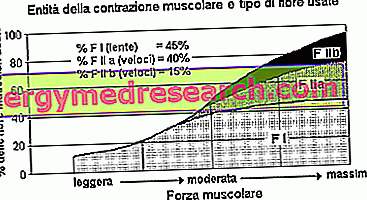You could write entire volumes on the various strategies to train the abdominals and on the relative systems of series and repetitions. The topic has always been the subject of discussions, in the gym as well as in the laboratory.
Among the many debates, one of the most common concerns the choice of the optimal number of repetitions to train this muscle group. So is it better to train these muscles with light weights and more repetitions (over 12 per set) or with higher loads and fewer repetitions (under ten per set)?
Traditional method: LIGHT WEIGHTS AND MANY REPETITIONS
The principle of supercompensation states that by regularly overloading the muscles and respecting physiological recovery times, they respond by adapting and improving their own characteristics.
However the abdominals are only in one way similar to the other muscle groups while for the other they are species to themselves. In fact, like all other postural muscles, the abdominals are incredibly elastic and resistant to fatigue, but at the same time also made up of a not inconsiderable number of fast fibers.
To confirm this, if we look at the red and white fiber composition of this muscle group we find that the abdominals are made up of a large percentage of red or type I fibers. These fibers, very rich in mitochondria, are precisely those involved in muscular endurance exercises.
The principle behind this theory states that if a muscle group consists largely of slow-twitch muscle fibers to respect its physiological function, it must be trained with a high number of repetitions (15-30 per series) and with weights light.
Percentage of slow and fast fibers present in human skeletal muscles (*)
(from Pierrynowski and Morrison integrated with Johnson and coll.)
(C. Bosco: "Muscular strength. Physiological aspects and practical applications" - Sportive Press Society 1997)
| MUSCLE | ST% | FTA% | % FTb |
Great buttock Ileo psoas semimembranosus Lata fascia tensor Large Quadric intermediate. Femor. Large Quadric medial. Femor. Soleo Great backbone Brachial biceps Deltoid Hamstring Sartorio Semitendinosus Wide side Quadric rectus femoris. Femor. Right abdomen Great Pectoral Brachial triceps | 50 50 50 70 50 50 75 50 50 60 65 50 50 45 45 46 42 33 | 20 - 15 10 15 15 15 - - - - 20 15 20 15 - - - | 30 50 35 20 35 35 10 50 50 40 55 30 35 35 40 54 58 67 |
Intensive method: HIGH WEIGHTS AND A FEW REPEATINGS
According to the principle of recruitment of muscle fibers, the smaller fibers, with slow contraction, are the first to be activated while the larger ones, with a faster contraction, are activated only for greater intensities. A high weight (such that it cannot be lifted more than 3-5 times) involves the activation of more muscle fibers than a lighter weight (which can be lifted for 12 or more repetitions). This allows for potentially greater development. In fact, light weights only stimulate slow-twitch fibers and may be insufficient to act on fast-shrink fibers.

CONCLUSIONS
Obviously, neither of the two methods is in itself better than the other because both methods are based on physiologically correct principles. It may therefore be appropriate to adopt a training method that alternates work phases with a high number of repetitions with light weights (15-25 repetitions) to work phases with a low number of repetitions but with higher weights (6-10 repetitions).
Using heavy weights to train the abdominals can be a very valid approach as long as you perform all the repetitions in a slow and controlled way; the aim is not to use the maximum weight but to make the lightest weight seem as heavy as possible by contracting to the maximum and maintaining the contraction during each single repetition. However, in the abdominal strengthening aimed at the prevention of low back pain, such an approach is not without its contraindications. A work with a low number of repetitions can in fact lead the subject to make mistakes during the execution, involving in this way other muscles including the thigh flexors. In these cases it is therefore advisable to perform the exercises in a slow and controlled way, without using additional loads and trying to isolate the abdominal wall muscles as much as possible.
See also: Optimal training, does it exist?



